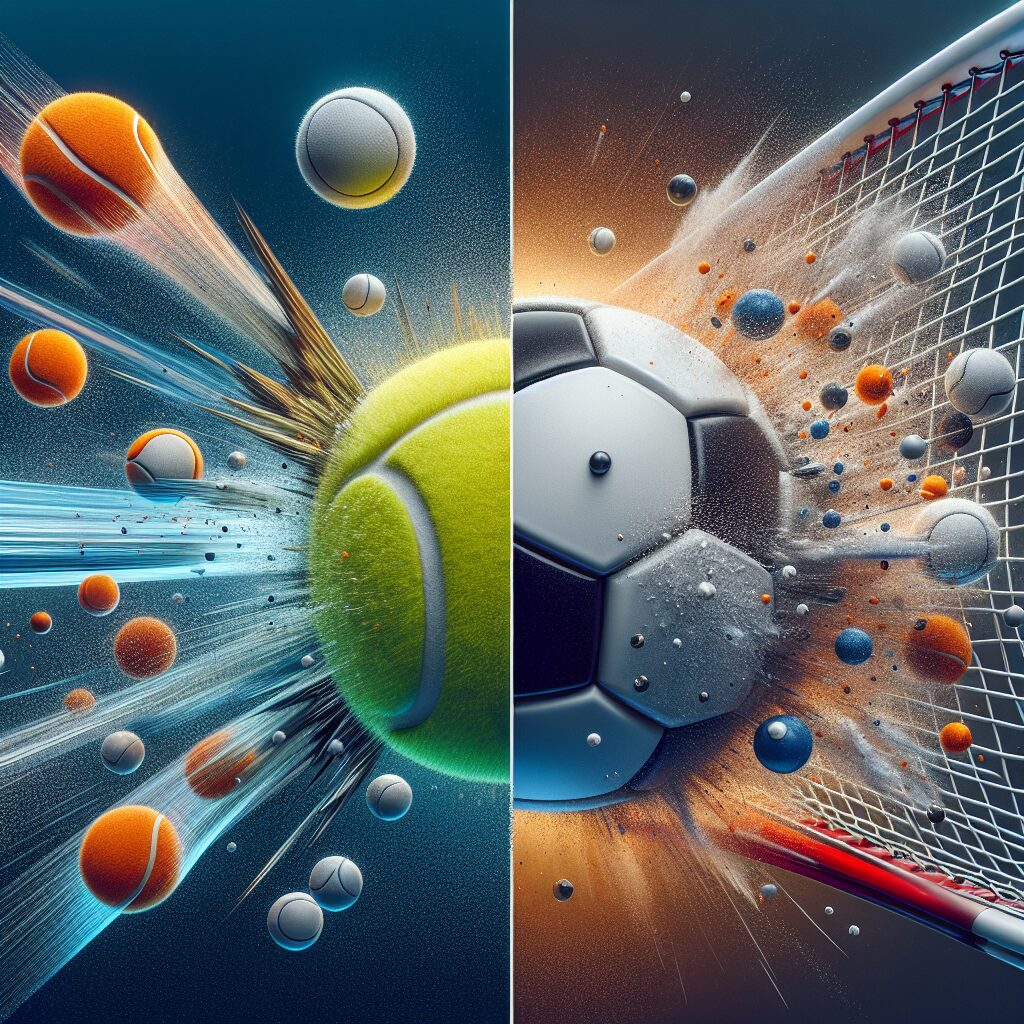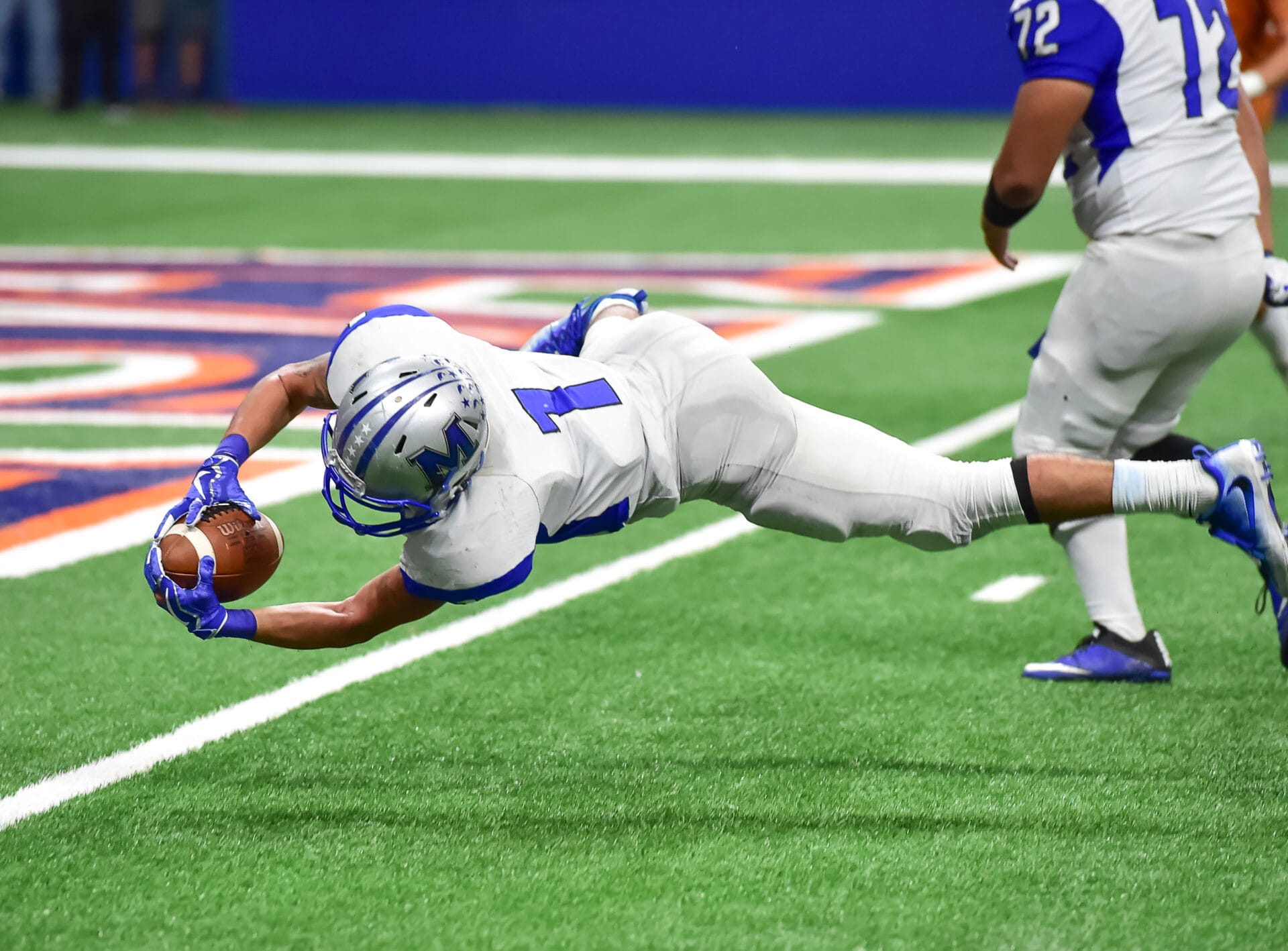Elastic Collisions in Sports: How Balls Behave
In the fast-paced world of sports, understanding the behavior of balls during collisions is crucial for athletes, coaches, and spectators alike. So, what exactly are elastic collisions? In simple terms, elastic collisions are those in which kinetic energy is conserved before and after the collision. It means that during these collisions, the players or objects involved experience minimal deformation or damage. But how does this phenomenon impact the performance of athletes and the dynamics of various sports? Let’s delve deeper into the world of elastic collisions and explore their specific impacts and unique features.
When it comes to sports, elastic collisions play a significant role in determining the outcome of a game or a performance. Consider the sport of billiards, for instance. The elastic collision that occurs between the cue ball and the object balls is what enables players to strategically pocket them. By studying the behavior of colliding balls, skilled players can predict the angles, rebounds, and spins accurately, making precise shots a reality. Similarly, in team sports like soccer and basketball, understanding how an elastic collision between a player and the ball influences its trajectory and speed can immensely improve passing accuracy and goal-scoring opportunities. But that’s not all – elastic collisions also come into play in sports such as tennis, cricket, and golf, where the concept of rebound and impact greatly affects gameplay.
Now that we understand the significance of elastic collisions in sports, let’s uncover the key takeaways you can expect from this article. Firstly, we will explore how the concepts of momentum and kinetic energy are intertwined with elastic collisions and their implications in various sports. Next, we will delve into the technical aspects of ball behavior during elastic collisions, including factors like mass, velocity, and contact time. Additionally, we will discuss practical strategies that athletes and coaches can employ to optimize their gameplay based on the principles of elastic collisions. By the end of this article, you will have gained valuable insights into how balls behave during elastic collisions and how athletes can harness this knowledge to elevate their performance on the field or the court. So, without further ado, let’s embark on our journey into the captivating world of elastic collisions in sports.
Key Takeaways
1. Elastic collisions occur when two objects collide and bounce off each other without any loss of kinetic energy. In sports, this is crucial for preserving momentum and ensuring players can accurately predict the trajectory of balls.
2. The coefficient of restitution (COR) is a measure of how elastic a collision is. In sports, balls with high COR values, such as tennis balls, allow for faster and more unpredictable movements, making the game more exciting for players and spectators alike.
3. The surface material of the ball greatly influences its COR. Balls made of materials like rubber or composite are more elastic, while those made of leather or plastic are less so. Manufacturers often manipulate the materials to achieve desired COR values for different sports.
4. Understanding the physics of elastic collisions can help coaches, athletes, and equipment designers optimize performance. By carefully selecting the material and design of sports balls, they can enhance the game, improve player safety, and achieve desired performance characteristics.
5. Elastic collisions can also have practical applications beyond sports. They are used in industries like automotive engineering and product design to develop safer and more efficient structures that can absorb and dissipate kinetic energy effectively. By studying elastic collisions in sports, scientists and engineers can gain insights applicable to other fields.
How do Balls Behave in Elastic Collisions in Sports?
Elastic Collisions Defined
In the world of sports, elastic collisions occur when two objects collide and bounce off each other without any loss of kinetic energy. These collisions are characterized by the objects retaining their original shapes and sizes, as well as their velocities being exchanged. Understanding how balls behave in elastic collisions is crucial in various sports, where accurate predictions of the resulting motions are necessary.
Factors Affecting Elastic Collisions
Several factors influence how balls behave in elastic collisions:
- Mass: The mass of the balls involved affects the overall outcome. Heavier balls possess higher momentum and can transfer more kinetic energy during a collision.
- Velocity: The initial velocities of the balls determine the resulting velocities after the collision. The conservation of momentum plays a significant role here.
- Material: Different balls made of various materials exhibit varying degrees of elasticity. The elasticity of the materials affects how the balls deform and rebound during collisions.
- Angle and Point of Impact: The angle at which the balls collide impacts the direction and final velocities after the collision. Similarly, the point of impact affects how the energy is transferred between the balls.
Applications in Sports
The behavior of balls in elastic collisions finds extensive applications across various sports:
- Billiards: In billiards, the behavior of the cue ball and object balls during collisions determines the path of the balls after impact, enabling precise shots.
- Tennis: Elastic collisions between the tennis ball and the racket influence the speed and angle of the ball, allowing players to control their shots accurately.
- Golf: Understanding how the golf ball behaves during collisions with the clubface helps golfers optimize their swing and achieve greater distances.
- Cricket: The behavior of the cricket ball during collisions with the bat affects the trajectory of the ball, influencing the gameplay and strategies of both bowlers and batsmen.
Factors Impacting Sports Performance
The behavior of balls in elastic collisions directly impacts sports performance in various ways:
- Accuracy: A proper understanding of how balls behave allows athletes to make accurate predictions about the trajectory and final positions of the balls.
- Speed and Distance: By analyzing the behavior of balls during collisions, athletes can optimize their techniques to achieve desirable speed and distance attributes.
- Shot Placement: Knowing how balls behave enables athletes to strategically place their shots, maximizing their chances of success in the game.
- Energy Transfer: Understanding how energy is transferred during elastic collisions helps athletes avoid potential injuries and optimize their movements.
How can you Improve your Understanding of Elastic Collisions in Sports?
- Study the laws of motion and their application to collisions in sports.
- Experiment with different types of balls, examining how they behave in elastic collisions under varying conditions.
- Watch slow-motion video analyses of sports collisions to observe the behavior of balls in detail.
- Seek guidance from coaches or experts who can provide insights and advice on the behavior of balls during collisions.
- Engage in simulations or virtual reality experiences that allow you to interact with virtual ball collisions and understand their behavior.
Frequently Asked Questions
1. How are elastic collisions defined in sports?
Elastic collisions in sports occur when two objects, typically balls, collide and bounce off each other without any loss of kinetic energy or deformation. This phenomenon follows the principles of conservation of momentum and conservation of kinetic energy.
2. What factors affect the outcome of elastic collisions in sports?
Several factors influence the outcome of elastic collisions in sports, including the mass, velocity, and angle of the colliding objects. The elasticity or bounciness of the balls and the surface they collide on also play significant roles in determining the final behavior of the balls.
3. How do elastic collisions impact the performance of athletes?
Elastic collisions impact the performance of athletes by influencing the trajectory, distance, and speed of the balls in sports. Understanding the behavior of elastic collisions allows athletes to predict and control the movement of balls, resulting in more accurate shots, passes, and gameplay strategies.
4. Can you provide examples of elastic collisions in popular sports?
Yes, several popular sports involve elastic collisions. In basketball, when a player shoots a ball towards the hoop, it collides with the backboard or rim and bounces off. In soccer, when players kick the ball, it collides with their feet and bounces off in various directions. Tennis, golf, and baseball are other examples where elastic collisions are fundamental to the gameplay.
5. How does the elasticity of balls affect their behavior in sports?
The elasticity of balls significantly influences their behavior in sports. More elastic balls tend to bounce higher and faster after a collision, while less elastic balls may absorb more energy and have lower rebound velocities. The choice of ball elasticity is often tailored to the specific sport to optimize gameplay and performance.
6. Are there any sports where non-elastic collisions are more desirable?
While most sports utilize elastic collisions to control the behavior of balls, some sports favor non-elastic collisions. For example, in billiards or pool, the balls are designed to have little or no elasticity, allowing them to come to a stop after a collision, enabling precise positioning and strategic gameplay.
7. How can athletes optimize the behavior of balls during elastic collisions?
Athletes can optimize the behavior of balls during elastic collisions by adjusting factors such as the angle and velocity of the collision, as well as the choice of ball material and surface characteristics. Additionally, mastering the technique and timing of their movements can help athletes achieve the desired outcomes during collisions.
8. Are there any safety concerns associated with elastic collisions in sports?
While elastic collisions in sports are generally harmless, there can be instances where the speed or force of the collision poses a safety risk. It is crucial for athletes to use appropriate protective gear, follow safety guidelines, and consider the potential risks associated with high-velocity elastic collisions.
9. How do professionals measure and analyze elastic collisions in sports?
Professionals measure and analyze elastic collisions in sports using techniques such as high-speed cameras, motion capture systems, and specialized sensors. These technologies allow for accurate tracking of the balls’ motion, velocity, and deformation during collisions, providing valuable data for analysis and improvement.
10. Can the behavior of balls during elastic collisions be mathematically modeled?
Yes, scientists and mathematicians have developed mathematical models to understand and predict the behavior of balls during elastic collisions in various sports. These models utilize principles of physics, such as momentum and energy conservation laws, to simulate and analyze different scenarios, aiding in the understanding and optimization of ball behavior.
Final Thoughts
Elastic collisions play a crucial role in sports, shaping the dynamics and precision of gameplay. The behavior of balls during these collisions can be a fascinating area of study, blending physics, mathematics, and athletic performance. By understanding and exploiting the principles of elastic collisions, athletes can unlock their full potential and achieve remarkable feats on the field or court.
Exploring the behavior of balls during elastic collisions not only enhances athletic performance but also contributes to the development of innovative sports equipment and training techniques. Continued research in this field allows us to push the boundaries of what is possible in sports, creating thrilling moments and inspiring future generations of athletes to reach new heights.




